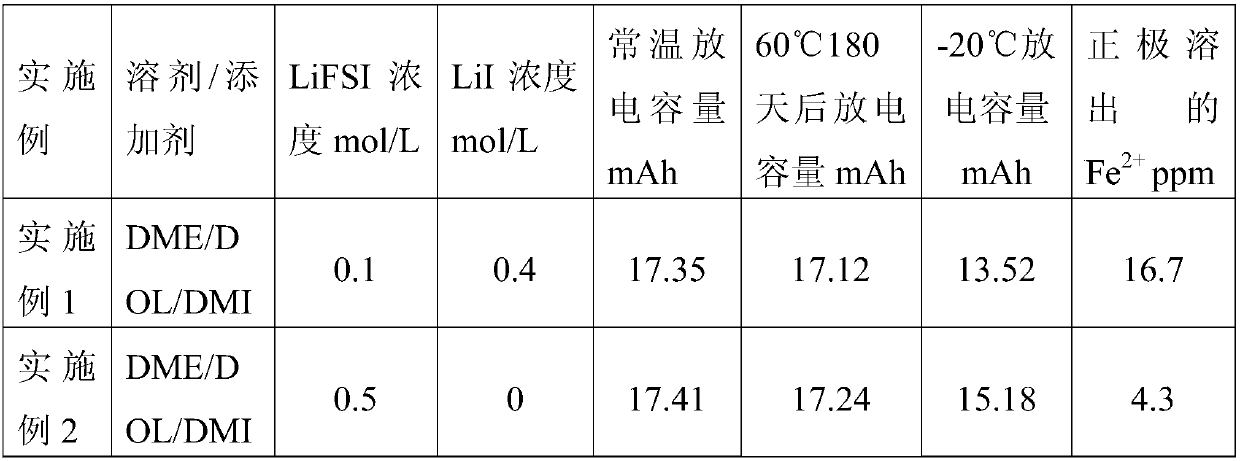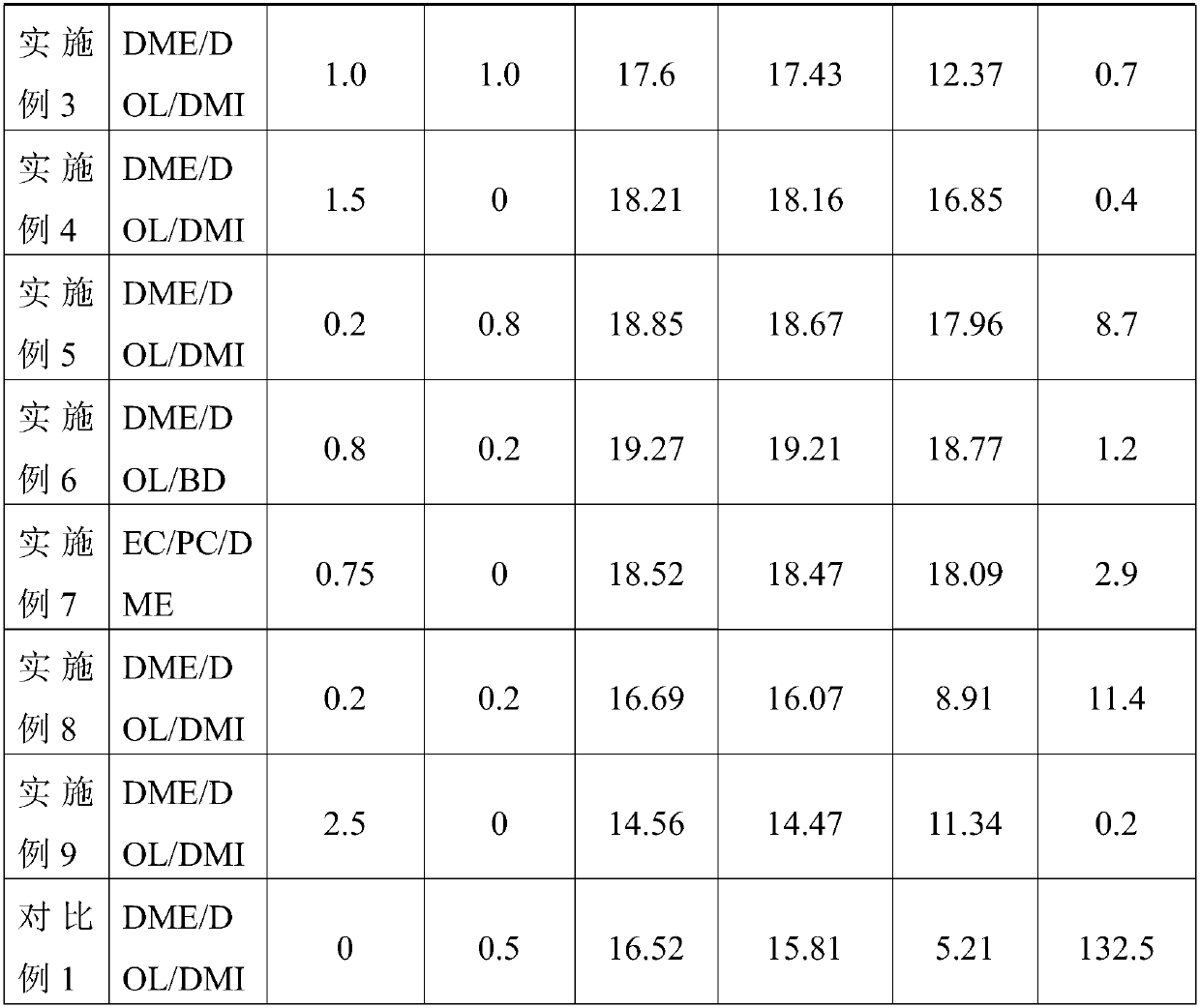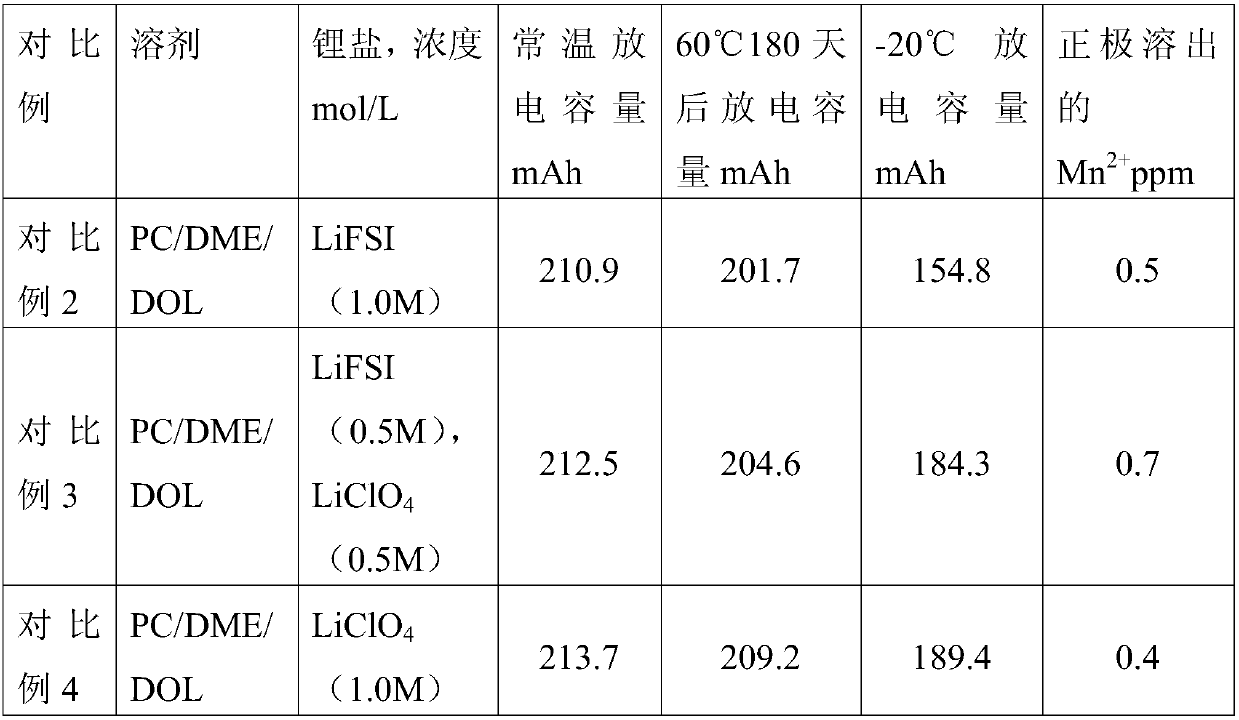Lithium-iron disulfide battery
An iron disulfide battery and iron disulfide technology are applied in the field of lithium-iron disulfide battery non-aqueous electrolyte and lithium-iron disulfide battery, which can solve the problems of damaging positive electrode active materials, reducing battery discharge capacity, etc. Shelf life and discharge capacity, effect of inhibiting dissolution, inhibiting internal micro-short circuit
- Summary
- Abstract
- Description
- Claims
- Application Information
AI Technical Summary
Problems solved by technology
Method used
Image
Examples
Embodiment 1
[0028] Use DME and DOL as solvents, the concentration of lithium bisfluorosulfonyl imide is 0.1mol / L, the concentration of lithium iodide is 0.4mol / L, and a small amount of additive DMI is added to prepare the non-aqueous electrolyte solution for primary lithium-iron batteries of this embodiment .
Embodiment 2
[0030] DME and DOL were used as solvents, the concentration of lithium bisfluorosulfonyl imide was 0.5 mol / L, and a small amount of additive DMI was added to prepare the non-aqueous electrolyte solution for the primary lithium-iron battery of this embodiment.
Embodiment 3
[0032] Use DME and DOL as solvents, the concentration of lithium bisfluorosulfonyl imide is 1.0mol / L, the concentration of lithium iodide is 1.0mol / L, and a small amount of additive DMI is added to prepare the non-aqueous electrolyte solution for primary lithium-iron batteries of this embodiment .
PUM
 Login to View More
Login to View More Abstract
Description
Claims
Application Information
 Login to View More
Login to View More - R&D
- Intellectual Property
- Life Sciences
- Materials
- Tech Scout
- Unparalleled Data Quality
- Higher Quality Content
- 60% Fewer Hallucinations
Browse by: Latest US Patents, China's latest patents, Technical Efficacy Thesaurus, Application Domain, Technology Topic, Popular Technical Reports.
© 2025 PatSnap. All rights reserved.Legal|Privacy policy|Modern Slavery Act Transparency Statement|Sitemap|About US| Contact US: help@patsnap.com



